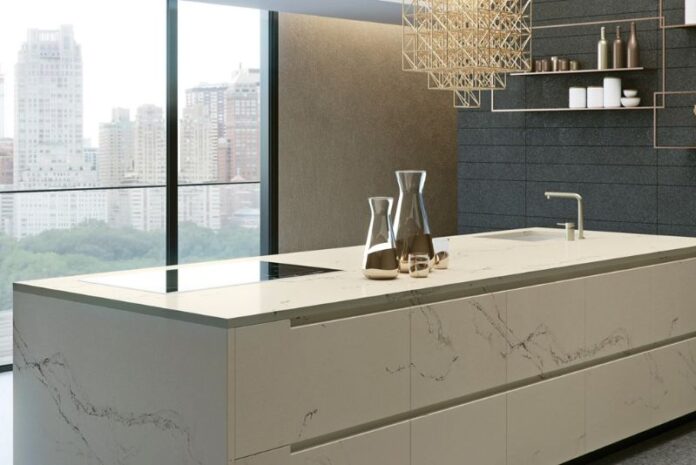When designing or renovating a kitchen, one of the most critical considerations is the height of the kitchen counters. This measurement plays a significant role in the overall functionality and comfort of the space. The standard height for kitchen counters is around 36 inches (91 cm), designed to accommodate most adults and facilitate efficient cooking, food preparation, and cleaning. However, achieving the perfect counter height goes beyond adhering to a single standard; it involves understanding user needs, kitchen functionality, and personal preferences. In this article, we’ll explore the standard height for kitchen counters, variations that cater to specific tasks, and factors influencing the selection of the ideal height for your kitchen.
When designing or renovating a kitchen, one crucial aspect to consider is the height of the kitchen counters. The standard height for kitchen counters is typically 36 inches (91 cm) from the floor. This measurement is designed to accommodate most adults comfortably, ensuring that tasks such as cooking, preparing food, and cleaning can be performed efficiently without causing strain.
What is the Standard Height for Kitchen Counters?
As mentioned, the standard height for most kitchen counters is around 36 inches. This height is ideal for standing tasks, allowing individuals to work without excessive bending or reaching. It is also conducive to proper ergonomics, vital for comfort during food preparation and cooking activities.
However, it’s essential to note that not every kitchen requires a one-size-fits-all approach. Variations exist depending on the kitchen’s intended use, user preferences, and the household’s specific needs.
Read More: Decorate the Top of Kitchen Cabinets
Variations in Counter Height
While the standard height is 36 inches, there are several situations where adjustments may be made:
- Lower Counters: Baking stations or children’s kitchen areas may feature lower counters (around 30 to 34 inches) to facilitate easier access and reduce strain when rolling dough or completing more minor tasks.
- Bar Counters: If you have a bar or seating area in your kitchen, the typical height for bar counters is about 42 inches. This height allows for comfortable seating arrangements and creates a natural barrier between the kitchen and dining areas.
- Island Counters: Kitchen islands can have varied heights depending on their purpose. Islands designed for food preparation typically follow the standard height, while those meant for dining may be higher.
Factors Influencing Counter Height Selection
Several factors should be taken into account when determining the ideal kitchen counter height:
- User Height: The stature of individuals using the kitchen is paramount. Taller individuals might find a 36-inch counter uncomfortable, while shorter individuals may prefer counters on the lower end of the spectrum.
- Functionality: Consider the main functions of your kitchen. If you do a lot of baking, a lower counter can make it easier to roll out dough. For a primary cooking space, the standard height is usually optimal.
- Seating Requirements: If you plan to include seating at your counters, consider the height of bar stools or chairs. Standard dining chairs typically pair with counters around 30 to 34 inches, while bar stools work best with 42-inch counters.
Customizing Kitchen Counter Height
Custom counters may be necessary for various reasons:
- Accessibility: Individuals with disabilities or mobility issues may require lower counters for easier access.
- Multi-level Designs: Some modern kitchens feature adjustable or multi-level counters that cater to diverse needs and preferences, allowing for seated and standing tasks.
- Tailored Solutions: Custom countertops can be designed to fit specific measurements, ensuring comfort for everyone who uses the kitchen.
Building Codes and Industry Standards
When remodeling or constructing a new kitchen, it’s essential to know local building codes that might dictate counter height. Consulting with a professional contractor can ensure compliance with these regulations while providing insight into the best practices for kitchen design.
Common Mistakes to Avoid When Choosing Counter Height
Choosing the right counter height for your kitchen is essential for functionality and comfort. However, many homeowners make mistakes during this process that can affect their cooking experience. Here are some common pitfalls to avoid:
Ignoring Personal Height and Comfort
One of the most significant mistakes is not considering the height of the primary users. Standard heights (91 cm or 0.91 m) may only suit some, especially if the main cooks are significantly taller or shorter than average. Testing different heights to find what feels comfortable for you is crucial.
Overlooking Multiple Uses
Many kitchens serve multiple functions: cooking, baking, eating, and socializing. Consider how this affects counter height if you plan to incorporate seating, such as bar stools. Bar stools typically require a counter height of around 107 cm (42 inches) for optimal comfort, so consider how different activities might require height adjustments.
Failing to Account for Accessories
Countertop appliances like blenders, mixers, or food processors may require extra space. If you place these appliances on the counter, ensure enough height to use them comfortably without strain.
Neglecting to Measure from the Floor
Some homeowners mistakenly measure from existing countertops or cabinets when buying new countertops. Always measure from the floor to ensure accuracy, especially if considering adjustable or custom-built solutions.
Not Consulting with Professionals
Skipping expert advice can lead to suboptimal design choices. Consulting with kitchen designers or contractors can provide valuable insights tailored to your space and needs, helping you avoid common pitfalls.
Ignoring Workflow and Traffic Patterns
Consider the workflow in your kitchen. If you have multiple cooks, ensure enough space between counters and appliances for easy movement. An inefficient layout can make cooking and cleaning cumbersome.
Forgetting Future Needs
Think about how your kitchen usage might change over time. If you plan to age in place, consider a counter height that accommodates ease of use for all potential future needs, including accessibility features.
By being aware of these common mistakes, you can make more informed decisions when choosing the right counter height for your kitchen, ensuring it meets your current and future needs.
Conclusion
Choosing the right kitchen counter height is vital for ensuring comfort and functionality in your kitchen. While the standard height of 36 inches accommodates most users, personal preferences, specific tasks, and accessibility needs may warrant adjustments.
When planning your kitchen layout, consider the factors influencing counter height and explore options that best suit your lifestyle. Whether you opt for standard counters, adjustable designs, or customized solutions, the key is to create a space that enhances your cooking experience and meets your unique needs. Embrace your kitchen’s potential by investing time and thought into its design, ensuring it remains a functional and enjoyable environment for years to come.



